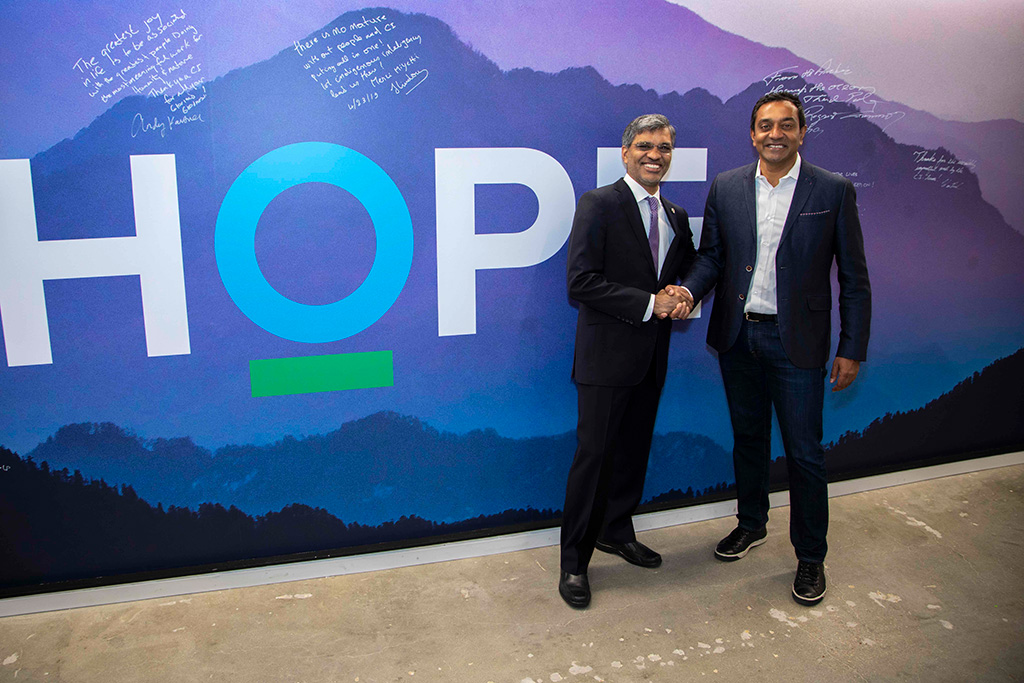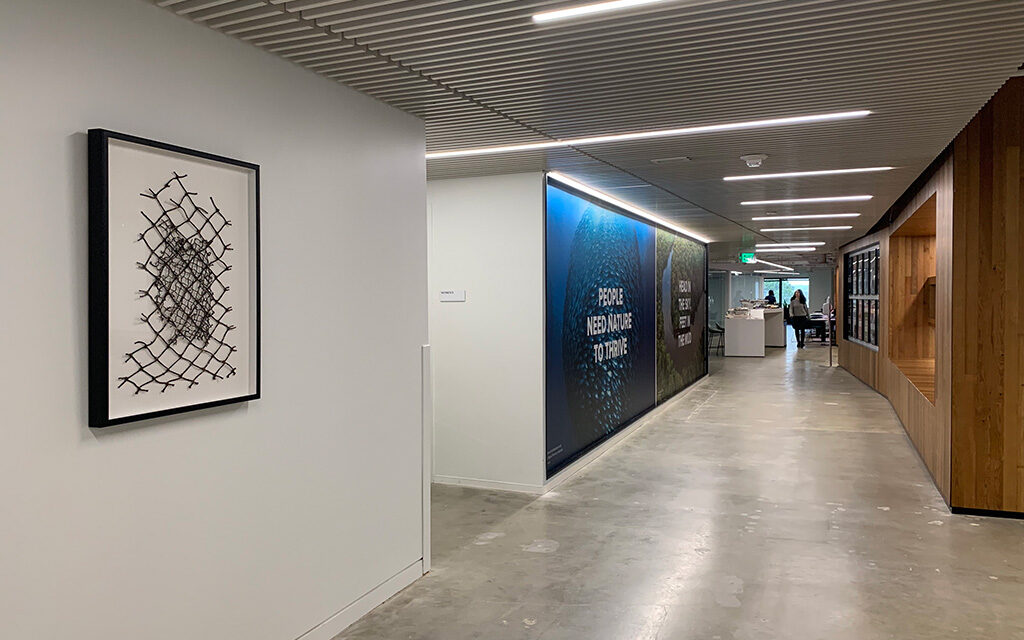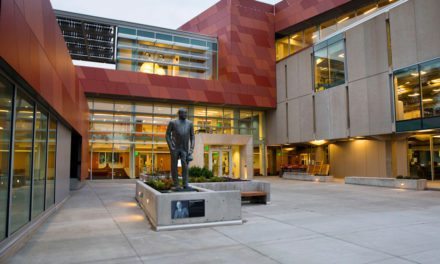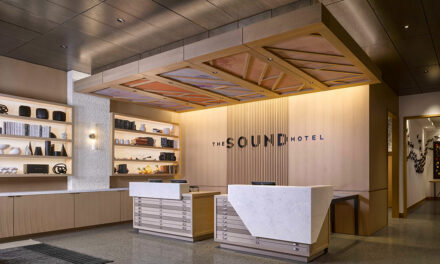Monday, Conservation International received LEED Gold certification for its newly redesigned Arlington headquarters. Conservation International CEO Dr. M. Sanjayan accepted a plaque commemorating the achievement at a ceremony attended by U.S. Green Building Council (USGBC) President and CEO Mahesh Ramanujam.
Conservation International earned LEED Gold certification under the LEED for Interior Design and Construction: Commercial Interiors rating system. To attain LEED Gold certification, Conservation International collaborated with Gensler, JBG Smith, and HITT Construction to implement specific sustainability features that received credits. These credits include points from a variety of categories such as materials and resources, water efficiency, energy use, and innovation.
To achieve LEED Gold, projects must earn a total of 60 points or higher under the rating system. Conservation International scored 63.
“Sustainability is a matter of living better, more thoughtfully and healthier in all aspects of life, including our workplaces. It’s in the fabric of Conservation International’s identity, operations, and our new office — literally down to the recycled fish nets in our carpet,” said Sanjayan. “The honor of LEED Gold certification underscores that living by these principles is possible and, ultimately, more valuable for Earth and humanity.”

Left to right: USGBC President and CEO Mahesh Ramanujam and Conservation International CEO Dr. M. Sanjayan.
Sustainability features of Conservation International’s headquarters
87% of construction waste (gypsum board, wood, metal, plastic, and cardboard) diverted from landfills to locations for reuse. Only 75% was required for LEED Gold consideration.
71% recycled content range from Optima Plant Based acoustic ceiling tiles, sourced from plant-based binder.
64% post-consumer recycled and 24% pre-consumer recycled content in Interface Net Effect by Interface carpet tiles, made from repurposed waste nylon from discarded ghost fishing nets and yarn. The carpet tiles are carbon neutral, helping the office space have a lower carbon footprint and contribute less to global warming.
37% of overall water consumption reduced by more efficient plumbing.
12% of energy use reduced with open floor plan and lower need for electric lighting.

Below the mural of a whale shark, are Interface Net Effect carpet tiles containing repurposed nylon from discarded ghost nets and yarn. The carpet tiles are carbon neutral, helping the office space have a lower carbon footprint and contribute less to global warming. Courtesy of Conservation International
Wood construction
The wall paneling of the office also contains sustainable materials sourced from Timeless Timber wood dating back to the 1800s and 1900s logging boom in the U.S. Great Lakes. The wood came from logs preserved in freezing, low-oxygenated waters. Additional wood from a decade-old, felled tree in nearby Loudoun County, Virginia serve as tables for collaboration among teams at each end of the office space floor.
Low-waste living
The new office not only applies sustainability in its design and construction, it also enables low-waste living features such as composting, reusable dishware, custom shower facilities, and bike storage for employees who bike to work.
A recent finalist for USGBC’s National Capital Region People’s Choice Award, Conservation International previously received LEED Silver in 2007 for its former office.
With more than 98,700 registered and certified projects across 176 countries and territories, LEED, or Leadership in Energy & Environmental Design, is the most widely used green building program in the world and an international symbol of sustainability excellence. LEED certification signifies that a building is lowering carbon emissions and conserving resources while prioritizing sustainable practices and creating a healthier environment.
“Conservation International’s LEED Gold certification demonstrates tremendous green building leadership and an ongoing commitment to sustainability excellence,” said Mahesh Ramanujam, president and CEO, U.S. Green Building Council. “LEED was created to make the world a better place and provide everyone with access to healthy, green and high-performing buildings. Buildings that achieve LEED certification are helping improve the quality of life for generations to come. Conservation International’s new headquarters serves as a prime example of how buildings can contribute toward a healthy, prosperous planet and care for the well-being of humanity.”
About Conservation International
Conservation International uses science, policy and partnerships to protect the nature that people rely on for food, fresh water and livelihoods. Founded in 1987, Conservation International works in more than 30 countries on six continents to ensure a healthy, prosperous planet that supports us all. Learn
more about Conservation International, the groundbreaking “Nature Is Speaking” campaign and its series of virtual reality projects: “Drop in the Ocean”, “My Africa,” “Under the Canopy” and “Valen’s Reef.” Follow Conservation International’s work on our Human Nature blog, Facebook, Twitter, Instagram and YouTube.
About the U.S. Green Building Council
The U.S. Green Building Council’s LEED green building certification system is the foremost program for the design, construction, maintenance and operations of green buildings. Every day, more than 2.6 million square feet of space is certified using LEED. More than 98,700 projects are currently participating in the commercial LEED rating systems, comprising more than 21.5 billion square feet of construction space in 176 countries and territories. In addition, there are more than 1.65 million registered and certified residential units. Learn more at usgbc.org/leed and review the Foundations of LEED development process.




